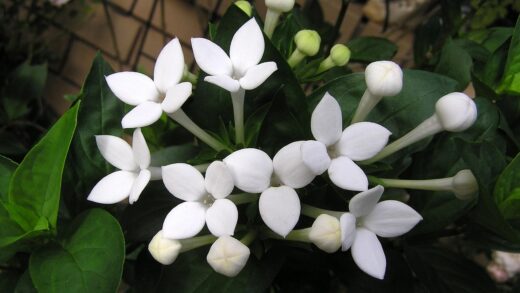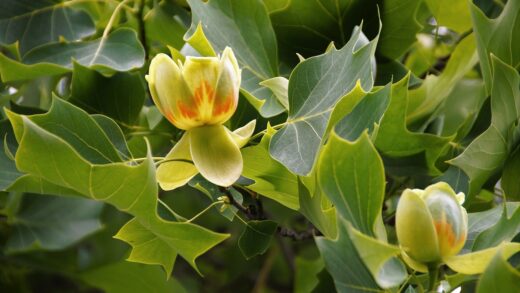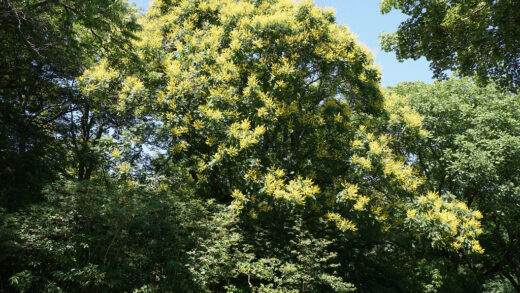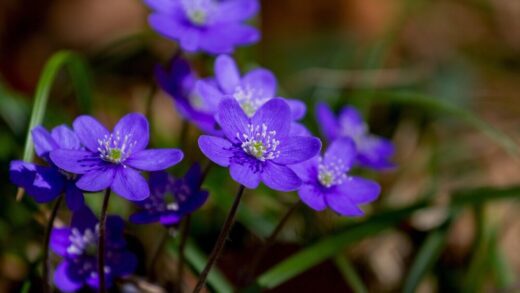The topic of pruning or trimming the Balkan squill is a straightforward one, as this small, bulbous perennial requires virtually no pruning in the traditional sense. Unlike shrubs or trees that need regular cutting to maintain their shape, size, and health, the life cycle of the squill dictates a more hands-off approach. The primary “trimming” consideration revolves not around cutting for shape, but around the management of the plant’s foliage after it has flowered. Understanding when—and more importantly, when not—to remove the leaves is the single most critical aspect of its post-flowering care and directly impacts the bulb’s ability to survive and flourish year after year.
The Balkan squill, like most spring-flowering bulbs, follows a distinct and efficient life cycle. In the spring, it rapidly sends up leaves and flowers, drawing on the energy reserves that have been stored in the underground bulb from the previous year. After the vibrant floral display has concluded, the plant’s focus shifts entirely to replenishing those energy stores. The strap-like green leaves become miniature solar panels, using the process of photosynthesis to capture energy from the sun. This newly created energy is then transported down and stored in the bulb, providing the fuel for the next year’s growth and flowering.
This energy replenishment phase is absolutely vital for the perennial nature of the plant. If the foliage is cut back or removed prematurely, this critical process is interrupted. It is akin to unplugging a rechargeable battery before it has had a chance to fully charge. A bulb that has been deprived of its foliage too early will be left in a weakened state. It will not have sufficient energy reserves to survive its summer dormancy and produce a robust display the following spring. This is why the temptation to tidy up the “untidy” dying foliage must be resisted at all costs.
Therefore, the only correct time to “prune” or remove the foliage of the Balkan squill is after it has completed its work and has died back naturally. This process can take several weeks after flowering has finished. You will know it is the right time when the leaves have turned completely yellow or brown and have withered. At this stage, they will usually detach from the base of the plant with a gentle tug. Only then is it safe to clear away the dead foliage without causing any harm to the bulb’s future prospects.
Post-flowering foliage management
The period immediately following the cessation of flowering is the most critical time in the management of the Balkan squill’s foliage. While the garden might look tidier if the leaves were cut back, doing so would be severely detrimental to the plant’s health. The green leaves, even as they begin to look a little past their best, are performing the essential function of photosynthesis. They are working hard to capture sunlight and convert it into the chemical energy that will be stored in the bulb, ensuring the plant’s survival and a good flower show for the subsequent year.
More articles on this topic
It is imperative to allow the foliage to remain on the plant for as long as it is green. During this time, you should continue to care for the plant by ensuring the soil remains lightly moist, particularly if the weather is dry. This helps the roots to continue functioning and supporting the leaves. As the process of energy transfer to the bulb progresses, the leaves will naturally begin to lose their green color and turn yellow. This yellowing is a clear visual signal that the chlorophyll is breaking down and the foliage is nearing the end of its useful life.
The process of the foliage dying back completely can take anywhere from four to six weeks after the last flower has faded. It is a gradual decline, and patience is required from the gardener. Some gardeners find the appearance of the dying foliage aesthetically unpleasing. A useful strategy to mitigate this is to plant the Balkan squill amongst later-emerging perennials, such as hostas, ferns, or geraniums. As these companion plants grow and leaf out in late spring, their foliage will naturally rise up and camouflage the fading leaves of the squill, effectively hiding the untidy phase.
Only when the leaves have turned entirely yellow or brown and have become dry and papery is it safe to remove them. At this point, they have fulfilled their purpose, and all the valuable energy has been successfully stored in the bulb below ground. The dead leaves can then be gently pulled away or trimmed at the base. This final cleanup marks the beginning of the bulb’s summer dormancy period and is the only “pruning” that the Balkan squill requires.
The mistake of early trimming
One of the most common and damaging mistakes a gardener can make with any spring-flowering bulb, including the Balkan squill, is to cut back the foliage too early. The desire for a neat and tidy garden can often lead to this well-intentioned but harmful practice. Many gardeners will mow their lawns too soon after their naturalized squill have flowered, or they will shear back the leaves in a border to make way for summer bedding plants. This action, however well-meant, effectively starves the bulb of the energy it needs to survive.
More articles on this topic
When the green leaves are removed, the bulb’s ability to photosynthesize is brought to an abrupt halt. The consequence of this is that the bulb will not be able to store sufficient food reserves to see it through its summer dormancy and initiate strong growth the following spring. The immediate effect may not be the death of the bulb, but it will manifest as a significant decline in performance. The following spring, the plant is likely to produce only a few small leaves and will probably fail to flower altogether. This is often referred to as the bulb “coming up blind.”
If this premature trimming is repeated for a second year, it is highly likely that the already weakened bulb will not have the resources to survive and will simply rot away in the ground. This is why it is so crucial to educate oneself about the life cycle of bulbs and to understand the vital role the foliage plays after the flowers have faded. The period of yellowing leaves is a temporary and necessary phase of untidiness that must be tolerated for the long-term health of the plant.
For Balkan squill that have been naturalized in a lawn, this means adopting a patient mowing schedule. The area where the bulbs are planted should be left completely unmown until the foliage has completely withered and disappeared, which is usually by early summer. Only then is it safe to run the lawnmower over the area. This consideration is key to establishing a successful and ever-expanding carpet of blue in your lawn over the years. Resisting the urge to tidy up too soon is the golden rule of bulb cultivation.
Removing faded flowers
While the foliage of the Balkan squill must be left untouched, there is a minor trimming task that can be considered: the removal of the faded flower stalks. This practice, known as deadheading, is not strictly necessary for the health of the plant, but it can have some benefits. The primary reason to deadhead is for aesthetics. Removing the spent flower stems after the petals have fallen can instantly neaten up the appearance of a clump, keeping the focus on the remaining flowers and the green foliage.
There is also a horticultural argument for deadheading. Once a flower has been pollinated, the plant will begin to expend energy on the production of seeds. By removing the faded flower head before it has a chance to set seed, you are redirecting that energy back towards the bulb. While the amount of energy saved is relatively small for a plant like the Balkan squill, for large and dense plantings, this small saving multiplied across hundreds of bulbs could theoretically contribute to the development of slightly larger and stronger bulbs for the following year.
However, it is important to weigh this against the potential for naturalization. The Balkan squill can propagate itself by seed, and allowing some of the flowers to form seed pods and disperse their seeds can lead to the gradual and natural spread of the colony over time. This can result in a very beautiful, naturalistic effect. Therefore, many gardeners choose not to deadhead their squill at all, preferring to let nature take its course. A good compromise could be to deadhead the most visible clumps at the front of a border for neatness, while allowing those in more informal or naturalized areas to set seed.
If you do choose to deadhead, the process is simple. Use a pair of small, sharp scissors or secateurs to snip off the flower stalk at its base, where it emerges from the leaves. Be very careful not to accidentally cut or damage any of the surrounding foliage during this process. The leaves are far more important to the plant’s health than the flower stalks, so their preservation is the top priority. Deadheading is an optional refinement, not an essential task.
Pruning for disease control
In the vast majority of cases, the Balkan squill is a healthy plant that does not require any pruning for disease control. However, in the rare event that a fungal disease, such as botrytis (grey mould), should appear on the foliage, some minor trimming may be warranted. Botrytis is most likely to occur in cool, damp, and humid conditions where there is poor air circulation. It typically appears as fuzzy, greyish-brown patches on the leaves or flowers, which can spread and cause the affected tissues to rot.
If you notice a small, isolated patch of what appears to be a fungal infection, it is advisable to remove the affected leaf or leaves immediately. Use a pair of clean, sharp scissors to snip off the diseased portion of the plant. It is important to cut back into healthy tissue to ensure you have removed all of the infected material. After making the cut, it is good practice to disinfect the blades of your scissors with rubbing alcohol or a bleach solution to prevent the accidental spread of the fungal spores to other healthy plants in your garden.
The removed plant material should be disposed of carefully. Do not add it to your compost heap, as the fungal spores can survive and multiply in the compost, leading to future outbreaks. Instead, the diseased material should be burned or placed in your household waste. Following the removal of the infected leaves, try to improve the growing conditions by thinning out any surrounding plants to increase air circulation, which will help the remaining foliage to dry out more quickly after rain.
It is important to emphasize that the need for this type of pruning is very rare. A healthy, vigorously growing Balkan squill planted in a suitable location with good drainage and air movement is highly unlikely to suffer from significant foliar diseases. This type of reactive pruning is a minor intervention for a specific problem, and it is not a part of the routine care and maintenance of this otherwise trouble-free and low-maintenance bulb.


















